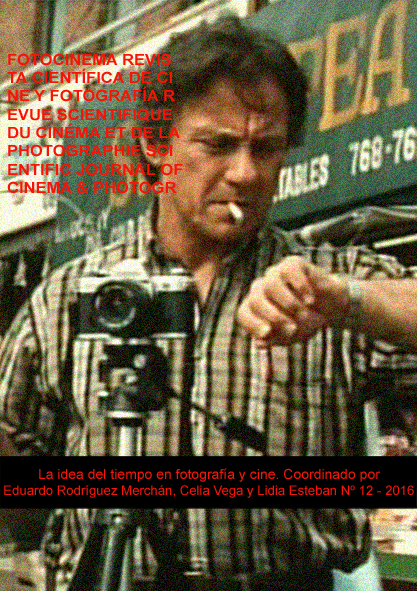Identidades estigmatizadas y su refiguración performativa en César debe morir
DOI:
https://doi.org/10.24310/Fotocinema.2016.v0i12.6046Abstract
El filósofo Ian Hacking ha afirmado, siguiendo a Sartre: “Posibilidad, proyecto y prisión son una misma cosa”. En ese trabajo, nos interesa seguir esta pista utilizando como desencadenante del análisis el film César debe morir (Paolo y Vittorio Taviani, 2012), un docuficción que relata la experiencia de un grupo de prisioneros que ensayan y ponen en escena la obra Julio César de Shakespeare, entrelazando ese hilo con la vida cotidiana de los reclusos y con la trama de la obra misma. Mediante el film, sus recursos, y lo que muestra de la experiencia teatral, reflexionaremos sobre los vínculos entre posibilidad, proyecto y prisión – literal, y metafórica. Nuestro objetivo es analizar la relación entre la construcción de identidades estigmatizantes y las posibilidades de desplazamiento en términos de agencia y empoderamiento. Consideraremos, además, los modos en que el teatro y el cine pueden resultar medios privilegiados para llevar adelante la reconfiguración performativa de aquellas descripciones. Para ello, tomaremos como clave de lectura una serie de nociones provenientes de la filosofía contemporánea, principalmente aquella de “clases interactivas”, aportada por el mismo Hacking, la de “performatividad”, siguiendo el análisis de Judith Butler, y la de “matriz”, que es utilizada por ambos autores.Abstract:
Philosopher Ian Hacking has asserted, following Sartre: “Possibility, project and prison are one of a piece”. In this work, we are interested in following that cue through an analysis of the film Caesar must die (Paolo and Vittorio Taviani, 2012), a docufiction portraying the experience of a group of prisoners who rehearse and stage William Shakespeare's Julius Caesar. The film blends this with the prisoners' everyday life and with the plot of the classical play. Through the film, its resources, and what it shows about the theatrical experience, we will address the relationship between possibility, project, and prison – literal, and metaphoric. Our aim is to analyze the relationship between the construction of stigmatized identities and the possibilities of displacement in terms of agency and empowerment. We will also consider the ways in which theatre and cinema could be particularly useful means to carry out this performative reconfiguration of those descriptions. In order to achieve this, we will adopt as a key a number of notions from contemporary philosophy, notably “interactive kind”, brought by Hacking himself, “performativity”, following Judith Butler's analysis, and the idea of “matrix”, adopted by both authors.
Palabras clave:Matriz; performatividad; prisión; clase interactiva; arte.
Keywords:
Matrix; performativity; prison; interactive kind; art.Downloads
Metrics
Downloads
Published
How to Cite
Issue
Section
License
All contents published in Fotocinema Revista científica de cine y fotografía are protected under the Creative Commons Attribution-NonCommercial-ShareAlike 4.0 International (CC BY-NC-SA 4.0) license. All about this license is available in the following link: <http://creativecommons.org/licenses/by-nc-sa/4.0>
Users can copy, use, redistribute, share and exhibit publicly as long as:
- The original source and authorship of the material are cited (Journal, Publisher and URL of the work).
- It is not used for comercial purposes.
- The existence of the license and its especifications are mentioned.
There are two sets of authors’ rights: moral and property rights. Moral rights are perpetual prerogatives, unrenounceable, not-transferable, unalienable, imprescriptible and inembargable. According to authors’ rights legislation, Fotocinema. Revista científica de cine y fotografía recognizes and respects authors moral rights, as well as the ownership of property rights, which will be transferred to University of Malaga in open access. The property rights are referred to the benefits that are gained by the use or the dissemination of works. Fotocinema. Revista científica de cine y fotografía is published in an open access form and it is exclusively licenced by any means for doing or authorising distribution, dissemination, reproduction, , adaptation, translation or arrangement of works.
Authors are responsable for obtaining the necessary permission to use copyrighted images.













13.png)




